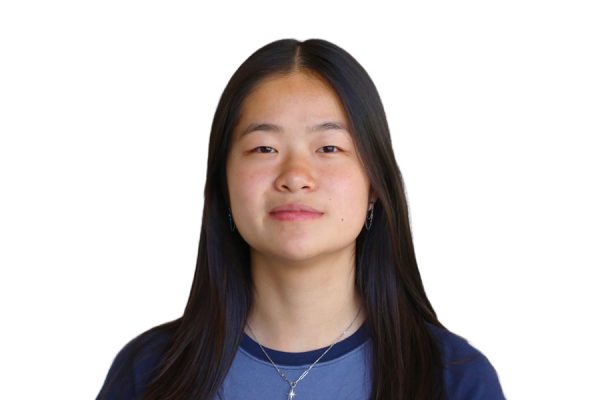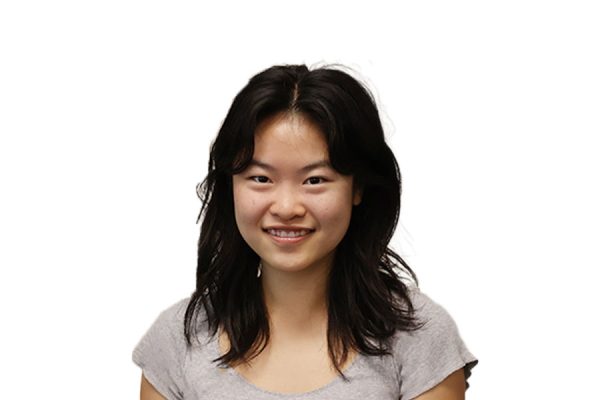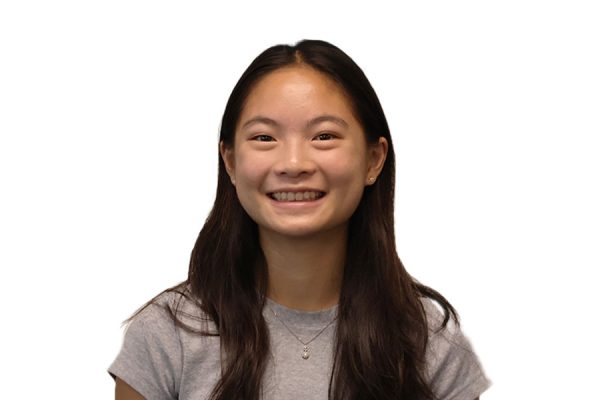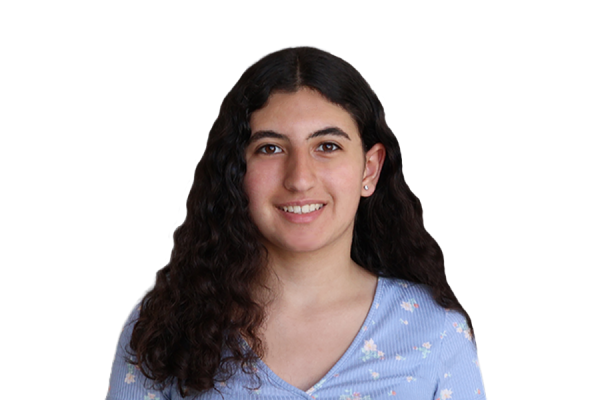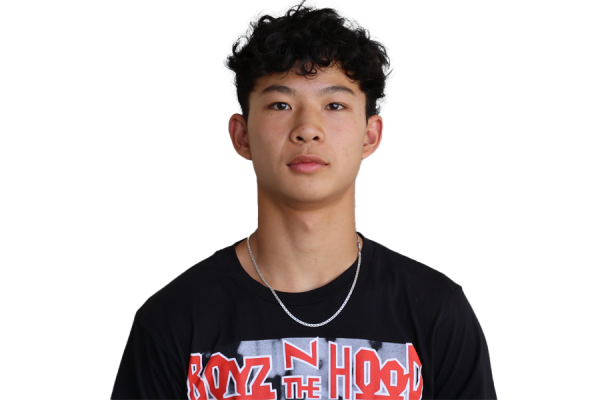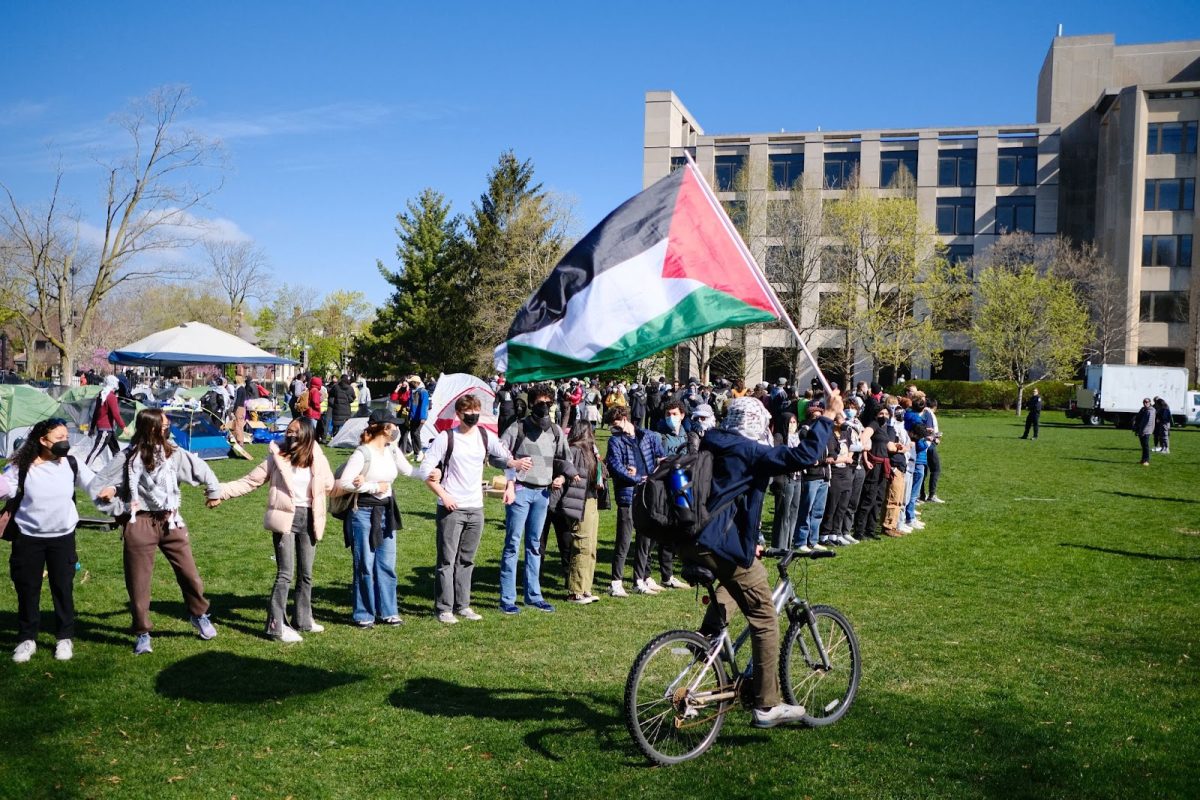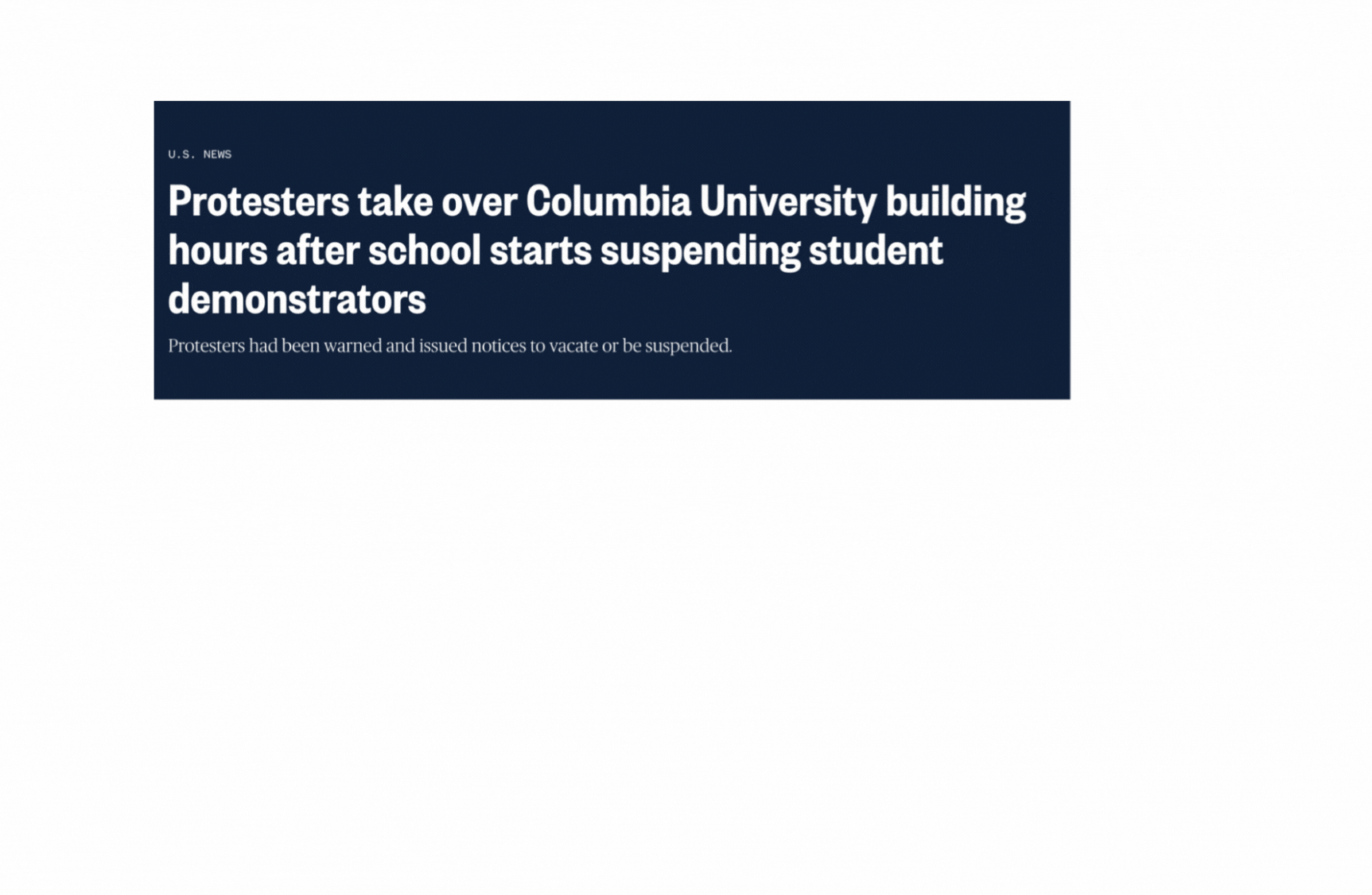
Middle ground: Reconciling free speech and university response to pro-Palestinian protests
A deafening bang rings out, accompanied by a blinding flash of light as police throw a stun grenade into Columbia University’s Hamilton Hall on April 30. Hundreds of police officers dressed in heavy duty, black riot gear flooded the building and the surrounding campus.
The building was renamed “Hind’s Hall” by protesters after a six-year-old Gazan girl, Hind Rajab. She was killed as part of Israel’s assault on Gaza following the militant Palestinian group Hamas’ Oct. 7 attack that killed around 1,200 Israelis. Over 36,000 Palestinians have been killed in Israel’s offensive as of May 29, according to the UN Office for the Coordination of Humanitarian Affairs and the Gaza Ministry of Health.
282 protesters would ultimately be arrested that day at the Ivy League school and the nearby City College of New York.
Further south and a few days prior, a video goes viral of an Emory University professor, Caroline Fohlin, yelling “What are you doing?” to police officers arresting a pro-Palestinian demonstrator before being wrestled to the ground and restrained herself. She can be heard crying out in pain as officers push her head into the concrete sidewalk.
Universities nationwide are facing a major reckoning over their responses to students’ Gaza solidarity encampments and protests. University presidents have faced numerous demands for their resignation and have been called to Congress to testify about their policies surrounding the protests and antisemitic speech.
The pro-Palestinian encampments swept college campuses across the country in April and May, calling for their universities to divest from investing and associating with companies affiliated with Israel and their offensive in Gaza. Approval of Israel’s military actions has dropped from 50% to 36% between November and March, according to a Gallup poll.
University administrations cracked down harshly on these protests in some cases, most notably at Columbia University, arresting students, taking disciplinary action, and even pepper spraying demonstrators. Since then, commencement ceremonies at Harvard, University of Michigan, Brown University, and more have been disrupted by protesters calling attention to the Israel-Hamas war in Gaza and criticizing university leaders for their treatment of student demonstrators.
Writing by Elaine Jiang
A Gaza encampment emerged at Stanford University, a mere 20-minute drive from Carlmont. Students at the university shared why they had chosen to speak out and what they thought of the protests on their campus.
Images and videos of protesters and police clashing have plastered front pages and occupied headlines for weeks.
The University of Southern California (USC) was one such school whose police response produced backlash for their violence and aggression toward student protesters.
“They came with things like pepper spray and tear gas. They started really aggressively pushing and grabbing students. They had batons — it was very violent and antagonistic,“ said Alexa Harpe*, a recent Carlmont graduate and first-year student at USC.
Law enforcement ultimately arrested 93 protesters at USC on April 24.
Map by Elaine Jiang
According to Harpe, the tension between protesters and officers became apparent when police began using rubber bullets to deter the crowd.
“They’re not meant to be shot at real people,” Harpe said. “You’re supposed to bounce and ricochet the rubber bullets off the floor to hit people, but police are shooting them at students.”
On April 25, administrators announced that the university’s main commencement ceremony would be canceled altogether due to the safety concerns of the protests.
For many students, this abrupt decision was a big disappointment.
“I didn’t go into it feeling too surprised, but it was very disillusioning to see that this school does not care about its students at all. They talk about the Trojan, our mascot, family, but the moment that Trojan family fights for something, that becomes an issue,” Harpe said.
According to Harpe, USC administrators and protesters attempted to negotiate, but it was not productive.
“They did not come in good faith. They did not understand the divestment demands and hadn’t taken time to read what those were. They were only trying to waste time. They would say ‘We’ll agree to talk to you if you guys vacate the campus,‘ which obviously would just make us lose leverage,” Harpe said. “Some sort of negotiations took place, but they just waited until people had to leave for summer break and that was it.”
Harpe also felt, that the police response to the encampment at USC was excessive, with over 100 officers sent in for a congregation of only 70 to 100 protesters.
Furthermore, Harpe said that during a vigil the protesters held to remember Palestinians killed by the Israeli military in Gaza, pro-Israeli counter-protesters showed up blasting loud music. Harpe felt that there was a clear difference in the way that the two sides were treated.
“The police were immediately hostile to us, detaining people without explaining why they were doing that. But with other protesters, they were not behaving that way. They were laughing and chatting,” Harpe said.
Seeing the atrocities in Gaza and feeling helpless about them was a driving factor to many attending pro-Palestine protests.
“This was a way for me to be involved in what was happening in the world, to protest it, and to say that we deserve better here in the U.S. They deserve better in Palestine. This shouldn’t be happening,” Harpe said.
Chart by Elaine Jiang
Harpe said that the protest created a strong sense of community as people came together, day after day, to protest and aid one another in staging the encampment.
“It was truly the space where I felt the most in touch with people. We relied on each other, we organized food for ourselves, we had a medic table, we had all kinds of supplies — we really leaned on each other. It was such a beautiful thing,” Harpe said.
Harpe also mentioned that extra supplies the encampment received in donations were donated back to local charities such as Water Drop LA, a water distribution organization in Los Angeles that works with the unhoused community.
“That is what we’re about — being there for the community at large and coming together to fight for a better world. Because we deserve better, and Palestinians deserve better,” Harpe said.
Like Harpe, many of the protesters hope that the buzz over campus demonstrations will lead to more awareness about the Palestinians’ suffering in Gaza.
“Talking about the student protests is really great, but they shouldn’t get more attention than what’s happening in Palestine. We’re very privileged here, to be able to even think about protesting and voluntarily choosing to do an encampment,” Harpe said. “People in Palestine don’t get to choose whether or not they live in tents.”
Writing by Elaine Jiang, Isabelle Ling, and Kiana Chen
The First and Fourteenth Amendments affirm that the government, both nationally and at the state level, must guarantee the freedom of speech and assembly, which empowers students at public universities to engage in peaceful protest to advocate for change.
Although this protection largely only applies to government and publicly-funded institutions, according to the National Communication Association, many private universities choose to issue statements affirming free speech as part of their commitment to creating a better learning environment for students to grow.
“Universities cannot discipline students because of the views they express on controversial topics such as the Israeli-Palestinian conflict. Universities can, however, impose what are called content-neutral time, place, and manner regulations,” said Thomas Healy, a board of visitors distinguished professor of law at Seton Hall University Law School.
This precedent of content-neutral time, place, and manner regulations was set by the Supreme Court in Ward v. Rock Against Racism in 1989, where it was determined that New York City could regulate the volume of concerts without violating the First Amendment.
“What that means is that a university can’t forbid you from taking a side in this conflict, but a university could say, ‘You’re not allowed to protest in a classroom where we’re holding classes,’’ or ‘You’re not allowed to put up permanent encampments on quads of a university,’” Healy said.
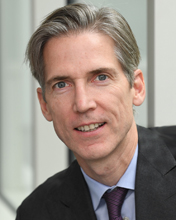
An engaged citizenry is an essential part of democracy and free speech is not always polite and pleasant. The whole point of free speech is that we make room even for speech that makes us uncomfortable.
— Thomas Healy
This means that the burden to be met is high. According to the Free Speech Center at Middle Tennessee State University, restrictions must pass a three-part test: the regulation must be neutral and not restrict specific content, it must be narrowly designed to aid a significant government interest, and it must leave open other ways for the speaker to communicate their message.
“Generally, as long as there’s an important objective that’s being served and there’s still other ways to speak, those kinds of regulations are allowed,” Healy said.
For example, banning encampments in Columbia, despite public pushback, does not infringe on one’s First Amendment rights because it is not tailored toward any one group.
Healy says that the Supreme Court has been generally clear that saying things that other people disagree with, even in some cases of hate speech, is protected under the First Amendment.
“It’s a different question, however, whether or not the university should have called in the police to have them removed,” Healy said.
According to Professor Eugene Volokh, the Gary T. Schwartz Distinguished Professor of Law at UCLA, universities were entirely within their right to remove encampments because they violated content-neutral time, place, and manner restrictions.
“If people are being arrested because they’re trespassing, and violating content neutral laws applicable to everybody of all views that prohibit people from occupying government buildings or camping out in outdoor quads, then that’s perfectly proper,” Volokh said.
However, there are some exceptions to administrators’ regulations of content-neutral laws.
“I have been seeing students’ speech being restricted because of content, and that’s bad,” Volokh said.
But in regular cases, Volokh believes that students can think freely “without taking over a building.”
Listen to the full conversation with Volokh in the podcast episode below.
Podcast by Isabella Zarzar
On the other hand, Healy believes that if the protesters are within their First Amendment rights, then forms of peaceful protest can be encouraged to have more productive conversations.
“I think that what’s required in these situations is really talking to students, really listening to students, and trying to promote dialogue and discussion among students,” Healy said.
However, students’ voices can clash with administrative goals, either in negotiations or through backlash. University administrators, then, are under enormous to balance the interests of all parties involved.
“A university is a place to learn, so if protests become disruptive and make it hard for other students to learn or make other students feel unsafe or unwelcome, that becomes a real problem,” Healy said.
According to Healy, finding the correct balance is crucial for school administrators.
“A part of what schools are there for is to help students find their voice and to realize that they can make a difference with their voice. Blind enforcement of the rules is not is not the way to go,” Healy said.
Healy also speaks on the positive aspects of student activism.
“I also just think that we should be glad that the students and young people care this deeply and are trying to make change in the world. And i’m not speaking here specifically about the Israeli Palestinian conflict,” Healy said.
According to Healy, he finds students behaving politely and calmly to be unrealistic expectations for a protest movement.
“We should be glad that young people are engaged and are trying to speak out and use their voice. An engaged citizenry is an essential part of democracy and free speech is not always polite and pleasant. The whole point of free speech is that we make room even for speech that makes us uncomfortable,” Healy said.
Writing by Elaine Jiang, Isabelle Ling, and Kiana Chen
Not all protests were met with brutal police crackdowns. Some schools have managed to come to agreements with their students. Northwestern University in Illinois had one of the shortest encampment protests of just under one week.
Ashley Wong is a freshman at the Medill School of Journalism at Northwestern University. Originally from Singapore, where freedom of speech is restricted, Wong was excited by the prospect of standing up for what she believes in after all the forced silence she saw growing up.
“It was beautiful to see how everybody was allowed to speak their mind as long as they weren’t being actively rude or unreasonable. A lot of the news media portrays the protests as a very dark presence, but it was very lively and welcoming,” Wong said.
Wong acknowledges that the protests have provoked discomfort and outrage, but that it is worth it to push for progress.
“The point of organizing a successful protest is to ensure that inconvenience is brought upon people because inconvenience is necessary to create change,” Wong said.
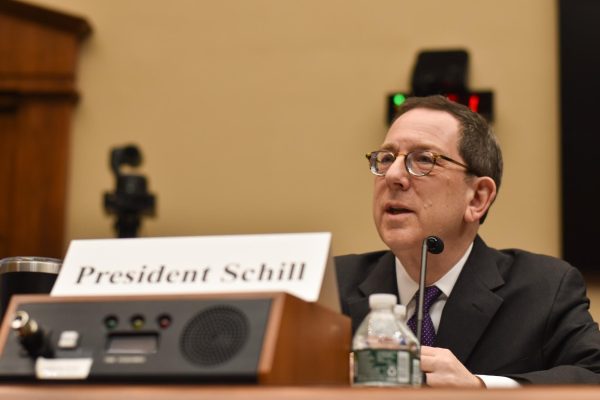
Unlike other universities such as UCLA, which had their encampment cleared by police, Northwestern students reached a deal after much negotiation with administrators to allow students to continue their stay on the Deering Meadow grounds at the school until June 1.
Additionally, according to Jacob Wendler, a junior at Northwestern and editor-in-chief of the Daily Northwestern, the school’s news organization, the encampments were largely peaceful due to the limited police interactions.
“The university police initially tried to shut it down very quickly by forcefully removing tents as faculty tried to prevent them taking them down. But after the first day, the police pulled out and had a very minimal presence over the next five days, just monitoring from the outside,” Wendler said.
The university prioritized negotiating with protesters and wanted to avoid sending in police as much as possible, according to Wendler. On the second day of the encampment, the president, provost, and vice president of student affairs sat down with a bargaining committee of protesting students and faculty to negotiate for 10 to -15 hours each day on proposals.
“After the first day of bargaining, the students had a sense that the university was committed to negotiating in good faith with them. That encouraged them to keep things calm and peaceful, so the organizers asked that the activists of the encampment to follow certain rules like to not spray paint buildings and to not pitch new tents because they wanted to maintain the good status that they had in negotiations,” Wendler said.
Wendler has been overseeing coverage of the protests since the fall semester for the Daily Northwestern and he says that the way national media has portrayed campus protests can often be less than holistic.
“You start to see those moments that are more hateful or violent being cherry picked. It’s important to talk about those moments of vitriol or antisemitism, but I don’t think that they necessarily represent the full picture,” Wendler said.
Chart by Elaine Jiang
According to Wendler, for most of the time the encampment was up, it focused on supporting the protesters staying there and featured community-oriented activities like having guest speakers and prayer and dance circles.
“It was interesting to see how over the course of the five days it was up, they created a self- sustaining community. At first it was a little bit hectic, but they streamlined their communication, figured out how they were going to transport food and water to everyone, made a bargaining committee that was negotiating with the administration, and had various speakers and Passover, Seders and Shabbat services and Muslim prayer services,” Wendler said.
While the administration at Northwestern showed a greater commitment to allowing students to express themselves through the Gaza encampment by negotiating and coming to an agreement, they also pushed to limit the amount of outside media press coverage.
“They allowed student media but banned the Chicago Tribune, the Sunday Times, the ABC News, all of those organizations. A lot of them got around it because many Medill, Northwestern’s school of journalism, students interned at those places, so they just sent in their interns. Even though that didn’t necessarily affect our coverage at the Daily Northwestern, I think it’s definitely concerning from a First Amendment perspective,” Wendler said.
Wendler has been in contact with other student journalists from Columbia University, where in an open letter, the editors of the Columbia Daily Spectator condemned their university administration for failing to protect student journalists who were denied access to reporting on their own campus and threatened with arrest by the NYPD.
He has also seen reporters from UCLA’s The Daily Bruin be attacked by counter-protesters, according to the Los Angeles Times, and student journalists at Dartmouth College be arrested by state police. All the violence and harassment of journalists has made him concerned.
“I made all my reporters write my phone number on their wrist with Sharpie and we had to talk about who is going to represent you if you get arrested and how you interact with police if you’re in that situation,” Wendler said. “We had a lot of conversations that we haven’t had to have in the past.”
The recent campus protests and the negotiations highlight the complexities and challenges of satisfying student demands that conflict with universities’ obligations and business interests. However, the ability of students and administrators to find common ground despite significant disagreements and external pressures offers a glimmer of hope for the future.
Writing by Elaine Jiang, Isabelle Ling, and Kiana Chen
As summer approaches, the Gaza encampments have largely dissipated, either having been cleared by police or disbanded as protesters reached agreements with their administration, and many students will begin leaving campus for summer break.
However, what has not dissipated is the hostilities between Israel and Hamas. According to the New York Times, Israel’s national security advisor, Tzachi Hanegbi, has stated that he expects the war to continue through the end of 2024.
If that turns out to be true, protests will likely return as a presence on college campuses when students come back in the fall, continuing to leave a mark on university culture.
“It will be even more challenging going forward for there to be productive dialogue between people who disagree. We’re gonna see the effects of it linger for a long time — just like in the relationship between student activists and administration,” Wendler said.
However, the protests have also marked a turning point in the power of student organizing.
“In the past, student activists have mostly done their own thing and the administration would ignore them, but this was an instance where student activists were sitting in the room and bargaining, face-to-face with the president and the provost to reach a compromise,” Wendler said. ”I think that’s going to have a lot of long lasting impacts.”
Since the beginning, student protesters have been looking to past college demonstrations for encouragement of what protests can achieve, such as with the Berkeley Free Speech movement in 1964 and the anti-Vietnam War protests in the 1960s and 1970s. Wong lists the 1995 hunger strike by Asian American Northwestern students to campaign for an Asian American studies program as particularly inspiring for her.
Now, she and many other student demonstrators hope it is they that future generations of college students will look up to.
“So many social justice movements in America have been started at college campuses. My wish is that people will look at us with pride because we have created another historic moment in America,” Wong said.
Writing by Elaine Jiang
Arranged by Elaine Jiang
